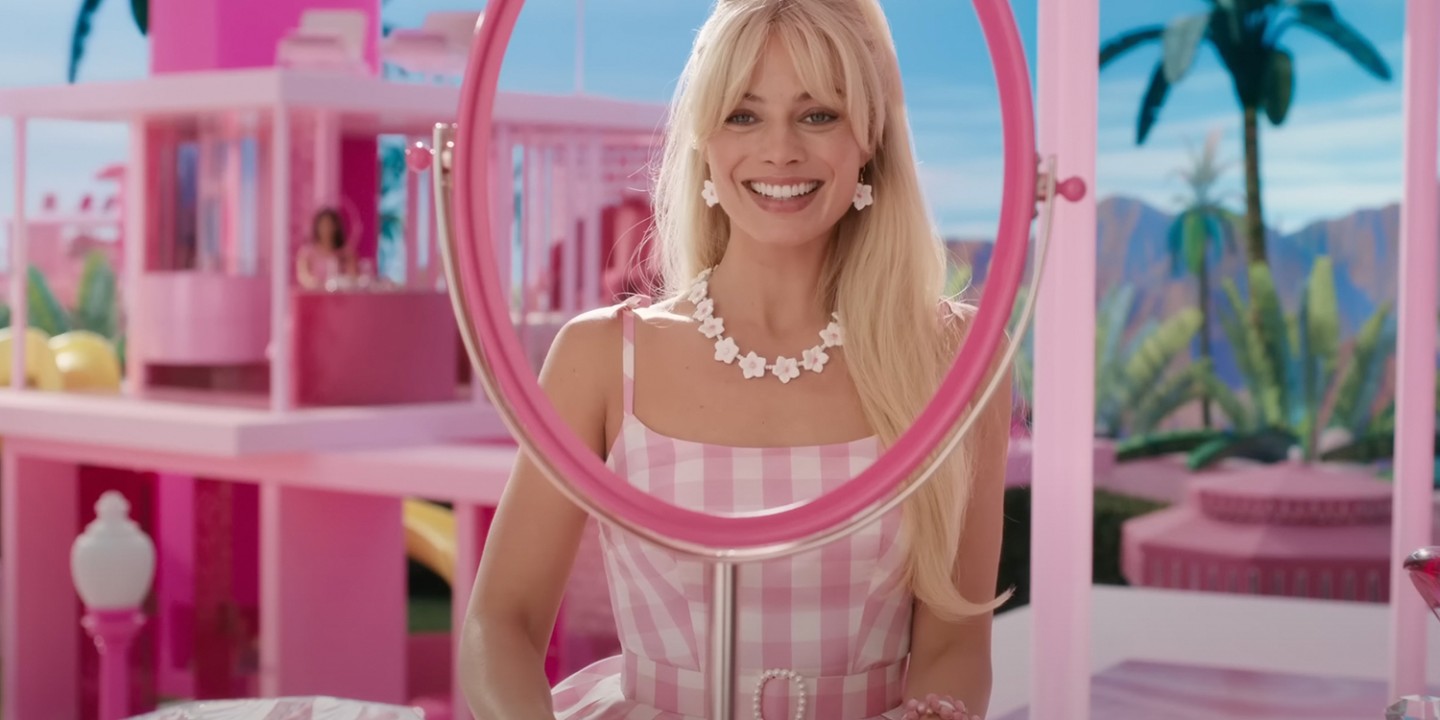The Barbie conversation
What started as a summer feel-good movie has opened discussions about embodiment, death, feminist utopias, and whether change can come through consumer goods.

Margot Robbie as Barbie (Courtesy Warner Bros. Pictures)
Unless you live in ascetic withdrawal from popular culture, you have probably heard of Barbie, the record-breaking summer blockbuster directed by Greta Gerwig. Your social media feed, like mine, might have been filled with far-flung family and friends dressed in shades of pink, posing next to movie posters and the life-size Barbie toy boxes that were sent as advertising props to many theaters.
Barbie is not a perfect movie, but it is a conversation, and a conversation worth having. For me, Barbie brought the unexpected pleasure of finding shared experiences in our fractured, factious age. I have changed my mind several times in conversations with friends and colleagues and read through fascinating reactions, analysis, and heated debate. These tendrils of conversation have connected me farther and wider in my shared experience than anything I can remember in a long time. What started as a summer feel-good movie has opened discussions about embodiment, death, feminist utopias, and whether change can come through consumer goods. We needed the fantasy of Barbie more than we might have guessed.
Read our latest issue or browse back issues.
The movie opens in Barbieland, a quasi-magical parallel reality where all Barbies live in the blissful belief that they have solved all problems of sexism in the real world simply through their existence. President Barbie presides over a just democracy while Journalist Barbie wins the Pulitzer Prize each year. They love their bodies and their perfectly molded arched feet. Every night is girls’ night, and the dance party is the dominant form of cultural bonding.
It is a plastic, arid paradise. The swimming pool is a giant sticker and the shower runs imaginary water. Even the bodies are perfectly dry, which doesn’t pose too much of a problem: the Barbies live in a blissful emotional stasis so they never cry, they eat imaginary food so they never swallow, and they never have sex since they have no genitals. There are plenty of Kens around, but they don’t do anything of substance. “You know surfer is not even my job,” says one Ken (Ryan Gosling), “and it’s not lifeguard, which is a common misconception. Actually, my job, it’s just beach.”
“And what a good job you do at beach,” says Doctor Barbie, with a patronizing smile as she heals an injury Gosling’s Ken sustained trying to impress Stereotypical Barbie (Margot Robbie). Ken only has a good day, after all, if Barbie happens to notice him.
If plastic aridity seems like too great a price to pay for female empowerment, you might think differently when Stereotypical Barbie and her loyal Ken journey to the Real World. Cellulite and intrusive thoughts of death have interrupted her perfect existence, and Barbie must repair a breach between the two worlds by discovering the human girl whose emotions are impacting her life. Landing in present day LA, she discovers another kind of plastic desert—this one without feminism. Without quite being able to name it, she senses that her body is no longer her own. “Why are all these men looking at me?” she asks Ken. “They’re also staring at me,” he says back somewhat in awe. “I’m getting undertones of violence,” says Barbie, her brow furrowed in confusion.
While Barbie discovers persistent misogyny, Ken discovers patriarchy, which he promptly brings back to Barbieland, upsetting the feminist utopia. Luckily, Stereotypical Barbie’s human companion Gloria (America Ferrara) and her daughter Sasha (Arianna Greenblatt) know a thing or two about the insecurity at the heart of patriarchy. Using tactics as old as Greek comedy, and with the help of all the “weird” Barbies who live on the outskirts of Barbieland, the Barbies set out to restore their paradise.
Perhaps the high point of the movie for me is when the Kens meet on the beach for a macho showdown, which morphs into a magnificent song and dance number. The Kens realize that their longing for patriarchy was just a cover for their own empty inner lives. “Is it my destiny to live and die a life of blond fragility?” Ken sings as hundreds of Kens fall into dance alongside him. I am not sure I will ever watch a war movie again without wondering if the men could just dance it out instead.
The movie is balancing a lot of demands, between the fantasy of Barbie, the reality of our own world, and the imperatives of consumer capitalism. Like the dolls lining your local superstore, Barbie the movie trades on the idea that a consumer object, created to maximize profit, can effect meaningful social change. The movie could easily slip into a well-meaning plea for gender equality, suggesting that what Barbieland needs is a more perfect balance between the sexes. Thankfully, the film doubles down on the plastic paradise, using the Barbieland secret weapon of a dance party to unmask patriarchy and keep the feminist utopia rocking along.
The movie ends with a meditation on death and the necessity of finitude. We might want the fantasy of Barbieland, this final twist suggests, but we can’t live on imaginary food alone. I am generally pro-finitude and embodiment, so I was surprised to find myself wanting more plastic. The plot development never felt coherently integrated into the main action of the film, and I didn’t feel like it really explained why we should want the weepy, wet bodies. If I am going to be sold a fantasy for profit, I want the fantasy intact and glowing hot pink.
Then again, some of my friends and family found the Real World’s payoffs more compelling than the Barbie Dream House. The hours I have spent reading and talking about what these ideas mean and what they reveal about our shared experience are proof of something more potent than plot cohesion. It’s worth digging some pink out of your closet, even if it’s just to stream the movie while you sit on your own couch. This conversation is too rare to miss.






